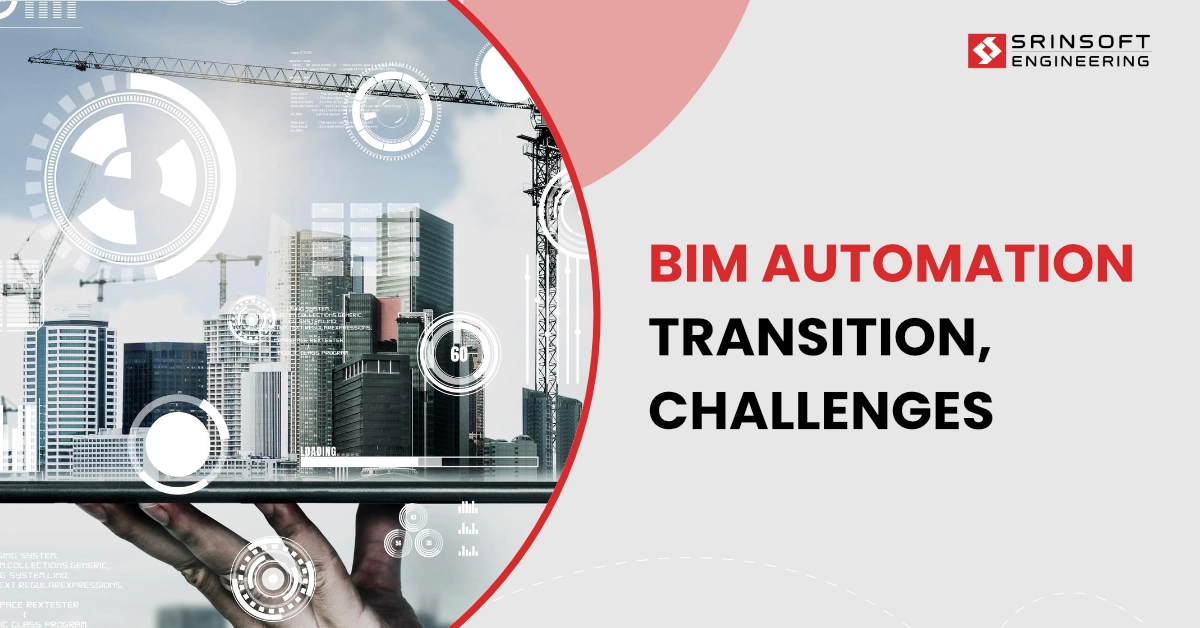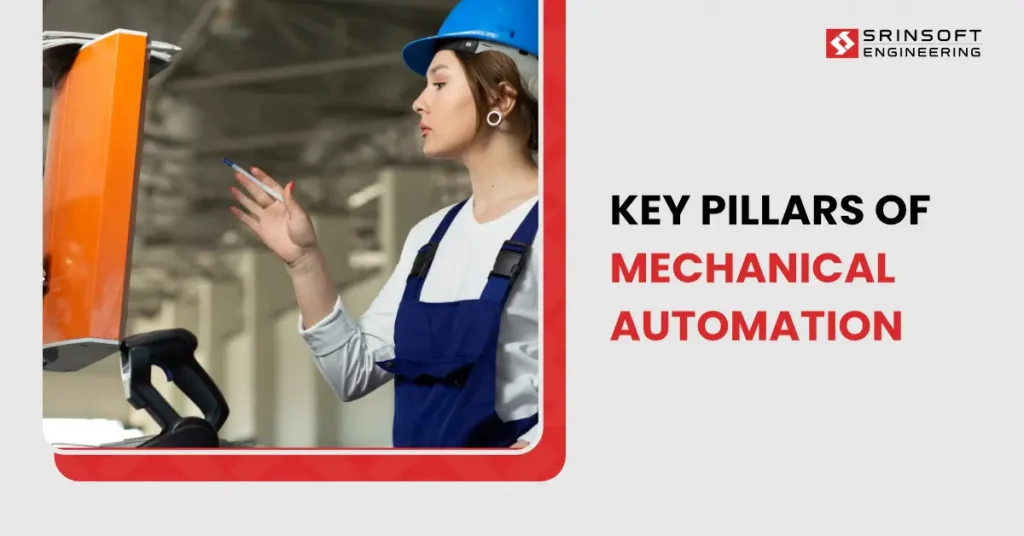
Integration of BIM with automation technologies promises even greater efficiency and accuracy. However, this transition isn’t without its hurdles.
In this blog, we’ll delve into the challenges of BIM implementation, providing practical solutions to ensure a smooth shift towards automation.
We’ll also guide you through the steps of implementing BIM Automation in your projects, empowering you to harness its full potential.
Join us on this journey towards a more streamlined and efficient construction process.
Implementation of BIM Automation
Implementing BIM Automation in your projects involves a systematic approach to ensure its seamless integration. Here are the steps to follow:
Step 1: Assess Your Project Requirements
Begin by conducting a thorough assessment of your project’s specific needs and objectives.
Consider factors such as project size, complexity, budget, and timeline. Identify areas where BIM Automation can provide the most significant benefits, such as 3D modeling, clash detection, quantity takeoffs, or other specialized tasks.
Step 2: Choose the Right BIM Software and Tools
Selecting the appropriate BIM software and tools is crucial for a successful implementation.
Research and evaluate options based on your project requirements identified in the first step.
Consider factors like compatibility with existing systems, ease of use, available features, and support resources provided by the software provider.
Step 3: Provide Adequate Training and Support
Comprehensive training is essential to ensure that your team is proficient in using the chosen BIM software and tools.
Arrange training sessions or workshops conducted by experts or the software provider.
Additionally, establish a support system for ongoing assistance and troubleshooting as team members begin to implement BIM Automation in their workflows.
Step 4: Define Roles and Responsibilities
Clearly define the roles and responsibilities of each team member involved in the BIM Automation process.
Assign tasks based on individual expertise and ensure that there is effective communication and collaboration among team members.
Step 5: Set Realistic Goals and Milestones
Establish realistic goals and milestones for the implementation of BIM Automation.
Define specific objectives, such as reducing project timelines, improving accuracy in quantity takeoffs, or achieving cost savings.
Track progress regularly to ensure that the implementation stays on course.
Step 6: Pilot Testing and Evaluation
Before full-scale implementation, conduct pilot tests on a smaller, controlled project to assess the effectiveness of BIM Automation in real-world scenarios.
Evaluate the results and gather feedback from team members to identify any adjustments or refinements needed.
Step 7: Monitor and Fine-Tune
Continuously monitor the performance of BIM Automation throughout the project lifecycle.
Keep an eye on key metrics, such as efficiency gains, error reduction, and cost savings. Make necessary adjustments or enhancements to optimize the use of BIM Automation for future projects.
Step 8: Document Best Practices
Documenting best practices and lessons learned during the implementation process is essential for knowledge retention and future reference.
Create a repository of resources, guidelines, and case studies that can be leveraged for subsequent projects.
By following these steps, you’ll be well-equipped to effectively implement BIM Automation in your projects, unlocking its full potential for improved efficiency, accuracy, and collaboration in construction endeavors.
Ensuring a Smooth Transition to BIM Automation
Transitioning to BIM Automation in the construction industry is a significant step toward improving efficiency, accuracy, and collaboration.
However, this shift requires careful planning and execution to maximize its benefits. Here are essential strategies to ensure a seamless transition:
Comprehensive Training and Education
Provide thorough training to your team members on the selected BIM software and tools. Offer workshops, online resources, and hands-on exercises to familiarize them with the new technology.
Start with a Pilot Project
Begin with a smaller, controlled project to test BIM Automation in a real-world scenario. This allows for practical learning, identifies potential challenges, and provides an opportunity for adjustments.
Assign Dedicated Champions
Designate individuals within your team as BIM champions. These experts can provide guidance, and support, and share best practices with their peers, ensuring a smoother adoption process.
Gradual Integration
Implement BIM Automation in stages rather than all at once. Start with tasks that offer immediate benefits, such as 3D modeling or clash detection. Gradually expand to more complex processes.
Establish Clear Workflows and Protocols
Define standardized workflows and protocols for using BIM Automation tools. This ensures consistency and minimizes confusion among team members.
Encourage Open Communication
Foster a culture of open communication where team members feel comfortable discussing challenges, sharing insights, and seeking assistance. This promotes a collaborative environment during the transition.
Provide Ongoing Support and Resources
Offer continuous support, including access to training materials, forums, and dedicated support channels. Regularly update team members on new features and functionalities.
Feedback Loop and Continuous Improvement
Solicit feedback from team members throughout the transition process. Use this input to make necessary adjustments, address concerns, and enhance the implementation of BIM Automation.
Monitor Progress and Key Performance Indicators (KPIs)
Track key metrics like project timelines, error reduction, and cost savings resulting from BIM Automation. Use KPIs to assess the impact and make data-driven decisions.
Document Best Practices and Lessons Learned
Document successful strategies, best practices, and lessons learned during the transition. Create a knowledge repository for reference in future projects.
Stay Updated on Industry Trends
Keep abreast of emerging trends and advancements in BIM Automation. This knowledge will help your team stay competitive and adapt to evolving technologies.
By following these strategies, you can facilitate a smooth transition to BIM Automation, allowing your team to fully leverage its benefits and enhance project outcomes in the construction industry.
Implementation Challenges and Solutions
Integrating BIM Automation into your construction projects comes with its own set of challenges.
However, with careful planning and strategic approaches, these hurdles can be effectively addressed. Here are some common challenges and their corresponding solutions:
Challenge 1: Initial Investment and Training
The upfront cost of acquiring BIM software and providing training to the team can be substantial.
Solution:
Budget Allocation: Allocate a dedicated budget for the implementation of BIM Automation. Consider it an investment in long-term efficiency and accuracy.
Phased Integration: Implement BIM Automation in stages, allowing for gradual integration and minimizing disruptions.
Challenge 2: Integration with Existing Systems
Integrating BIM Automation with existing project management systems and workflows can be complex.
Solution:
Thorough Compatibility Checks: Conduct a comprehensive analysis to ensure that the selected BIM software seamlessly integrates with existing systems.
Phased Integration: Implement BIM Automation in stages, allowing for gradual integration and minimizing disruptions.
Challenge 3: Data Security and Privacy Concerns
Protecting sensitive project data from breaches or unauthorized access is a critical concern.
Solution:
Robust Security Measures: Implement strong security protocols, including encryption, access controls, and regular audits.
Data Privacy Policies: Establish clear data privacy policies and ensure that all team members are aware of and adhere to them.
Challenge 4: Resistance to Change
Some team members may be resistant to adopting new technologies and workflows.
Solution:
Change Management Strategies: Develop a change management plan that includes clear communication, training, and support mechanisms to ease the transition.
Highlight Benefits: Emphasize the benefits of BIM Automation, such as increased efficiency, accuracy, and cost savings, to gain buy-in from team members.
Challenge 5: Customization and Adaptability
Ensuring that the chosen BIM software can be tailored to specific project needs.
Solution:
Consultation with Providers: Work closely with the software provider to customize settings and features to align with project requirements.
Regular Updates and Maintenance: Stay updated with software updates and patches to ensure optimal performance and adaptability.
Challenge 6: Managing Data Complexity
Handling the vast amount of data generated through BIM Automation can be overwhelming.
Solution:
Data Management Systems: Implement robust data management systems to organize, store, and retrieve project data efficiently.
Utilize Data Analysis Tools: Leverage data analysis tools to extract valuable insights from the generated data, aiding in decision-making.
Conclusion
Remember, the journey towards a more streamlined construction process begins with comprehensive training, careful planning, and a commitment to adopting best practices.
As you embark on your own path toward BIM Automation, keep in mind that continuous learning and a forward-thinking approach will be your greatest allies.
Here’s to a future where construction projects are executed with unprecedented precision and efficiency.
Embrace the possibilities that BIM Automation offers, and lead the way toward a new standard of excellence in construction.


